ETFs recently marked their 20th birthday in Europe amid uncertainty and volatility. The Covid-19 crisis has hit indices hard but opportunities in these index-based investments still exist, say experts.
 KENNETH LAMONT, SENIOR ANALYST, MANAGER RESEARCH, PASSIVE STRATEGIES, MORNINGSTAR
KENNETH LAMONT, SENIOR ANALYST, MANAGER RESEARCH, PASSIVE STRATEGIES, MORNINGSTAR
How is the current crisis testing the resilience of ETFs?
The current crisis has put this fund structure through its paces like never before. Extreme market pressures have seen ETFs tracking less liquid exposures, such as corporate debt [which has traded] at significant discounts to their NAVs [net asset values]. This allowed investors to get out of their positions, albeit at a cost even when the underlying bond markets seized up.
In fact, ETFs became a price discovery tool for a market in which liquidity had temporarily evaporated. This is a tough test that ETFs passed with flying colours.
Other more niche exchange-traded products haven’t fared so well. Several WisdomTree 3x leveraged Oil ETPs have shuttered following the abrupt tumble in oil prices. A case of products designed for betting on short-term commodity price volatility, breaking in the face of elevated short-term commodity price volatility can hardly be deemed a success.
Elsewhere, some thematic ETFs have hit it big. As I write the VanEck Vectors Video Gaming & eSports ETF is up 20% for the year for GBP investors. Other winning themes include cloud computing and healthcare innovation. The biggest thematic losers include the unfortunate iShares Ageing Population ETF.
 HOWIE LI, HEAD OF ETFS, LEGAL & GENERAL INVESTMENT MANAGEMENT
HOWIE LI, HEAD OF ETFS, LEGAL & GENERAL INVESTMENT MANAGEMENT
Public health, on a global scale, is high on the agenda, as epidemiologists and scientists struggle to understand Covid-19. Does this present an opportunity for healthcare-oriented strategies?
Telehealth is a key sector in our healthcare strategy that witnessed a strong surge in demand since the onset of Covid-19. With a large part of the world population working from home, performance was also led by remote monitoring companies due to the increasing reliance of life science on platforms to manage pharmaceutical sales activities. In fact, the L&G Healthcare Breakthrough Ucits ETF outperformed the MSCI World Index by more than 10% this first quarter.
Approximately a fourth of the ETF’s constituents took part in the innovative research for diagnosis or treatment of Covid-19. Indeed, Abbott, Thermo Fisher Scientific, and Danaher produced diagnostics, while therapeutic companies such as Regeneron, Moderna and Incyte have been working towards developing treatments and vaccines.
Telehealth not only helped doctors appoint remote visits but has also expanded its activity to new usage instances such as dialysis and pre-surgical screenings. It enables people to stay at home while receiving the necessary speciality care, also ensuring the continuity of speciality medical fields.
When healthcare providers and policymakers reflect on the Covid-19 crisis, we believe that investments into the decentralisation of health systems, digital healthcare, early detection and prevention, and robot/AI-assisted technicians will help manage healthcare more efficiently and mitigate future health crises.
 IVAN PASCUAL, HEAD OF EMEA ISHARES AND WEALTH SALES AT BLACKROCK
IVAN PASCUAL, HEAD OF EMEA ISHARES AND WEALTH SALES AT BLACKROCK
What are the risks and opportunities in investing in ETFs at the moment?
As investors renew their focus on the true sources of returns, we are seeing a shift from traditional security selection toward a whole-portfolio, outcome-oriented approach, where ETFs are taking centre-stage. In these times of market volatility and uncertainty, ETFs are performing exactly as they are designed to: providing efficient access to different asset classes for both long-term and tactical investing.
During the recent market stress, bond ETFs have provided liquidity and price transparency as underlying bond markets got more volatile and harder to trade.
Sustainable ETFs have also shown their resilience amid the ongoing market turmoil, providing a ballast for portfolios and allaying concerns that to invest sustainably comes at the expense of returns. We are at the start of a seismic reallocation of assets into sustainable strategies, of which ETFs will play a pivotal role.
 WALLACE TSANG, ASIA-PACIFIC HEAD OF INTERMEDIARY BUSINESS, VALUE PARTNERS GROUP
WALLACE TSANG, ASIA-PACIFIC HEAD OF INTERMEDIARY BUSINESS, VALUE PARTNERS GROUP
What trends have you seen emerging during these unprecedented times?
As the coronavirus pandemic impact continues to restrict global demand and ruin the supply chain, investors generally remain cautious to overly expose the key part of their assets tied to economic cycles. For risk diversification, investors have started to deploy their assets to tools which have low correlation with traditional risky assets.
During the course of the flight to safety, gold is supportive due to its high liquidity nature and is traditionally treated as a safe-haven asset. With the support of a negative interest rate environment, weak sentiment in US equity markets and in high yield bond markets, investors are gaining stronger appetite to invest in gold.
In the supply perspective, the gold price rally just started last year. In the past seven years, gold price performance was flat, which didn’t bring any incentive to gold miners to ramp up their output or enhance the production efficiency. We expect US dollar strength will be gradually faded out after the recent upswing upon consecutive Fed rate cuts. Relative weakness of the US dollar was supportive of gold price performance historically, and is expected to be going forward.
Moreover, global economic growth momentum this year, and even in 2021, would be in question after the deep cut by the pandemic impact; all major central banks would continue to expand their balance sheets through massive quantitative easing, as well as intensifying their fiscal deficit. All are favourable to gold price performance.
However, after a sharp rally in gold [starting in Q3 2019], its price would be volatile because of ongoing profit-taking and significant flows due to its high liquidity nature. Nonetheless, we believe any temporary setback in its worth provides opportunity for investors to accumulate, as the uptrend of performance has just started while most key factors for the gold price to rally are in place.
 OLIVER WEBER (PICTURED) HEAD OF ASSET AND WEALTH MANAGEMENT, AND DARIUSH YAZDANI PARTNER AND HEAD OF THE PWC GLOBAL ASSET & WEALTH MANAGEMENT RESEARCH CENTRE, PWC LUXEMBOURG
OLIVER WEBER (PICTURED) HEAD OF ASSET AND WEALTH MANAGEMENT, AND DARIUSH YAZDANI PARTNER AND HEAD OF THE PWC GLOBAL ASSET & WEALTH MANAGEMENT RESEARCH CENTRE, PWC LUXEMBOURG
Could current volatility cause a slowdown in ETF growth?
Globally, equity ETFs reached record highs at end-2019, but given the current crisis it’s safe to assume that we aren’t at these levels any more. While we’ve seen year-to-date outflows in some areas – like European corporate bonds, emerging market equity, small and mid-cap US equity and high-yield bonds – others have proven more resilient. US and global equity ETFs have naturally been volatile but continue to see inflows. Short-term US government bond ETFs have been more stable, with largely steady inflows until end Q1.
ESG [environmental, social and governance] ETFs are set to be a large growth driver for 2020 and beyond. During Q1 2020, equity ESG ETFs saw a marginally better performance, standing at -22.43%, than non-ESG equity ETFs which stood at -24.69%. Furthermore, flows into these products were, in percentage terms, significantly higher than non-ESG equity ETFs. Given the overall direction of the asset management industry towards a more sustainable model, we expect to see a significant growth in ESG ETFs, especially in Europe in the coming years.
Other than ESG ETFs, we believe that further development and innovation in the space of strategic beta ETFs will fuel the demand for such products resulting in a continued high growth in the coming years to 2025. The growth will also be pushed by the rise of robo-advisors serving the low end of the wealth segment.
Overall, we still expect ETF assets under management to reach just under US$10 trillion (€9.2 trillion) by 2025 as both institutional and retail investors are likely to pour money back into these products during the market recovery, especially in the US and Europe, which saw strong ETF growth in 2019.
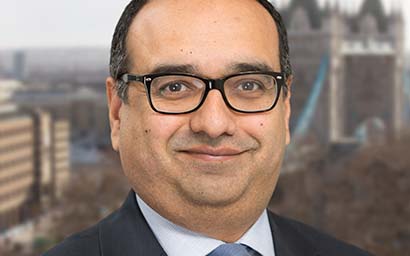 SARJ PANESAR, GLOBAL HEAD OF BUSINESS DEVELOPMENT, ASSET MANAGERS, SOCIETE GENERALE SECURITIES SERVICES
SARJ PANESAR, GLOBAL HEAD OF BUSINESS DEVELOPMENT, ASSET MANAGERS, SOCIETE GENERALE SECURITIES SERVICES
What are the main risks for ETFs in the current climate?
The main risks to investors are widening spreads in increased volatility and liquidity in the ETF space. The impact of these will vary depending on underlying asset classes and available liquidity. So far, the ETF market has been up to the challenge, but liquidity is finite and the costs of this may vary with market conditions. We have seen discounts of up to 5% over net asset value in some bond funds but these have quickly narrowed.
Could the slashing of dividends have an effect on certain ETFs?
The simple answer is yes. With a number of ETFs aiming to provide income, the loss of these dividends will have a direct impact on the income paid. In saying that, this is no different than any other fund wrapper in such circumstances. The market dynamic has changed during the pandemic. We do not know if this will be permanent or temporary, and how it may develop over time. One thing for sure, in the short term, dividend income will be limited.
 MOHAMMED KAZMI, PORTFOLIO MANAGER AND MACRO STRATEGIST, FIXED INCOME, UNION BANCAIRE PRIVÉE
MOHAMMED KAZMI, PORTFOLIO MANAGER AND MACRO STRATEGIST, FIXED INCOME, UNION BANCAIRE PRIVÉE
Do credit default swap (CDS) indices outperform traditional bond investing and ETFs during market downturns, and what are the risks involved?
During risk-off episodes, we have historically seen CDS indices outperforming the traditional cash bond benchmarks. This outperformance is driven by the stronger liquidity within the CDS market, which sees volumes actually increase in times of stress. For example, daily average traded volumes on both European and US high yield CDS indices are $5 billion in normal times and can increase up to 4x this amount during market stress. This is possible due to indices having both a long and short investor base, allowing for two-way volumes even during the sell-off.
This compares to traditional bond investing, where redemptions and outflows from the asset class which have been observed over the past couple of months, has meant that investors became forced sellers in a one-way market, which drives the underperformance compared to CDS indices. This illiquidity effect in the cash bond market can also be seen within the ETF space, where waves of selling leads to ETFs trading at a discount to the NAV.
Furthermore, ETFs can at times suffer from their composition which can diverge from the benchmark, given that they are attempting to replicate a bond market that is made up of many bonds, with different maturities and names that may not trade that regularly in the HY [high yield] market.
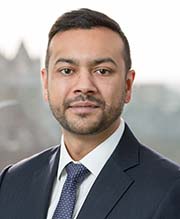 CHANCHAL SAMADDER, HEAD OF PRODUCT STRATEGY, LYXOR ETF
CHANCHAL SAMADDER, HEAD OF PRODUCT STRATEGY, LYXOR ETF
Despite the tensions on the markets in recent weeks, ETFs endured very well in an extraordinarily difficult environment. They have been traded generally without issues and they’ve allowed investors who wished to exit without hindrances, by benefiting from price controls set by the Stock Exchange in order to protect investors.
 OLGA DE TAPIA, GLOBAL HEAD OF ETF SALES, HSBC GLOBAL ASSET MANAGEMENT
OLGA DE TAPIA, GLOBAL HEAD OF ETF SALES, HSBC GLOBAL ASSET MANAGEMENT
Are ESG-focused ETFs still a viable option for investors?
The market downturn has undoubtedly had a disruptive effect on ETFs, as a negative cocktail of heightened volatility and widening spreads in the underlying markets has translated to ETF trading. However, trading has not been impossible. There has been a lot of focus on liquidity during this period of uncertainty. We have continued to execute both creation and redemption flow for our clients in the primary market, while the secondary market has functioned in a robust manner.
Despite this market turmoil, flows into sustainable and ESG-related products have remained resilient, weathering the storm better than more conventional ETFs. This demonstrates that investors’ desire to initiate change through sustainable investing shows no signs of slowing down.
The other factor driving ESG resilience is that during the downturn, clients are looking for companies with proven track records and healthy amounts of debt. As the underlying companies that these indexes overweight tend to be well run and high quality, we are seeing increased demand from investors looking to take comfort in passive ESG solutions.
 FANNIE WURTZ, HEAD OF ETFS, INDEXING AND SMART BETA BUSINESS LINE, AMUNDI
FANNIE WURTZ, HEAD OF ETFS, INDEXING AND SMART BETA BUSINESS LINE, AMUNDI
Where are investors seeking safe havens to weather the storm?
In an environment marked by a general market downturn that has impacted most risky asset classes, during the month of March, European ETFs registered their worst-ever month in terms of outflows.
However, it is worth noticing that some specific segments including socially responsible investing (SRI) remained in positive territory, confirming what has been a long-term trend for investors. SRI Ucits ETFs recorded positive flows over the first quarter and collected €5.3 billion of net new assets.
Gold played its safe-haven role, as it remains an efficient hedge at times of volatility. The ETC gold market also registered positive flows since the beginning of the year, with close to €7 billion of net new assets.
Moving forward, ETFs are efficient tools to implement diversified allocation strategies. They allow investors to adapt quickly to different market regimes and get prepared to reconsider exposure to specific asset classes.
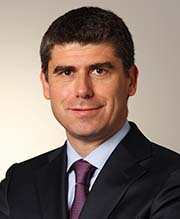 KOEN VAN DE MAELE, ;GLOBAL HEAD OF INVESTMENT SOLUTIONS, CANDRIAM
KOEN VAN DE MAELE, ;GLOBAL HEAD OF INVESTMENT SOLUTIONS, CANDRIAM
Could Covid-19 cause ESG strategies to fall by the wayside?
The number of ETFs that focus on ESG has substantially increased over recent years. This is not very surprising since both ESG and ETFs are hot topics and becoming more and more mainstream. However, in essence, ETFs are merely another vehicle that complements the [ESG] toolbox. One of the main differences between ETFs and classical funds is that one can trade them intra-day, which benefits dynamic investors with short-term investment horizons.
We expect that the interest in ESG investing will continue to grow. Recent events such as the wildfires in Australia and the global health crisis due to the coronavirus once more indicate that neglecting long-term sustainability issues can have a material impact on humans, societies, the economy and investments. Hence, investors will increasingly assess the ESG opportunities and risks of their investments. They will more and more search for companies that integrate long-term sustainability trends in their corporate strategy. Hence, to a certain extent, the increasing interest in ESG ETFs is somewhat a paradox as it combines long-term ESG elements into a more short-term oriented investment vehicle.
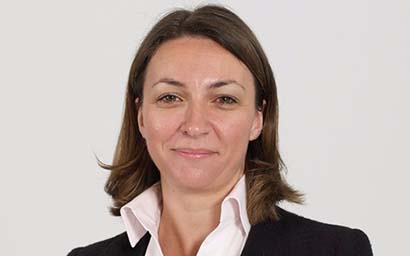 CAROLINE BARON, HEAD OF EMEA ETF SALES, FRANKLIN TEMPLETON
CAROLINE BARON, HEAD OF EMEA ETF SALES, FRANKLIN TEMPLETON
Are there any opportunities to be found in the current market climate?
We see many opportunities ahead for ETF tools as they’ve proven that they can stand heightened levels of volatility and are true to their colours. ETFs have clear merits in everyone’s portfolio alongside other tools, so we should see increased levels of adoption going forward.
The ESG trend is here to continue and may well accelerate as ESG strategies are proving more resilient in volatile markets and can also help better manage risks.
According to Morningstar, when many ETFs witnessed outflows, ESG-tilted ETFs collected more than $6 billion in Q1 this year showing the stickiness of investments despite the difficult context. Furthermore, regulation will continue being a major driver (EU benchmarking rules, MiFID II) and is going to further accelerate ESG adoption.
Another opportunity we see is the focus on quality companies. We believe that quality in particular is a superior and intuitive factor that may play a major role in portfolios. Coupled with the value factor, it helps identify sound companies, which is essential as the current conditions will mainly favour the strongest companies that can stand the course of time and are well managed.
ETFs are celebrating 20 years in Europe this year and we believe that the story has only just begun. These tools are one of the best financial innovations of modern times and should encounter even stronger success for the next 20 years due to their simplicity and flexibility.
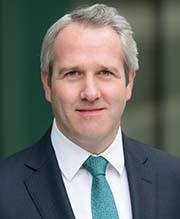 IVAN GILMORE, HEAD OF EXCHANGE TRADED PRODUCTS, LONDON STOCK EXCHANGE
IVAN GILMORE, HEAD OF EXCHANGE TRADED PRODUCTS, LONDON STOCK EXCHANGE
Global trading activity spiked in March as investors responded to the spread of coronavirus, with exchange-traded products registering significant volume increases amid elevated price volatility across all asset classes.
Investors rapidly repositioned portfolios across a range of ETPs, resulting in record ETP turnover of over £20 billion (€23 billion) on London Stock Exchange in March, almost double that of February.
While trading activity was mostly concentrated in ETFs tracking major indexes such as the FTSE 100, investors also shifted to safe havens such as gold, with the Invesco Physical Gold ETC among the top ten most traded out of the 2,000 ETPs available on London Stock Exchange.
Turbulence in global energy markets such as crude oil also translated into significant turnover, with ETPs tracking various oil benchmarks heavily traded.
In response to heightened volatility, London Stock Exchange widened its bid-ask spread for market makers in ETPs to 5% to support liquidity while ensuring orderly markets. Other exchange mechanisms such as circuit breakers were utilised at an unprecedented rate to protect investors from large price swings.
The volume of activity reflected the critical importance of keeping markets open for a range of investors; from individual investors holding ETP portfolios for savings or retirement purposes, to large institutional players.
 STEPHANE DEGROOTE, MANAGING DIRECTOR, HEAD OF ETFS AND DERIVATIVES BUSINESS EMEA, FTSE RUSSELL
STEPHANE DEGROOTE, MANAGING DIRECTOR, HEAD OF ETFS AND DERIVATIVES BUSINESS EMEA, FTSE RUSSELL
Against a backdrop of growing passive investment, product innovation in the ETF market has accelerated significantly in recent years as index providers, issuers and exchanges continue to support the construction of a wider and more sophisticated range of exchange-traded products.
Sustainable investment has been at the very forefront, with ETF issuers increasingly integrating climate goals across equity, fixed income and real estate markets.
Investors are also focused on increasing their passive fixed income allocations in corporate and sovereign debt following a decade of record issuance against a backdrop of low interest rates.
© 2020 funds europe





